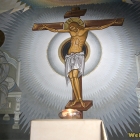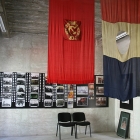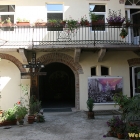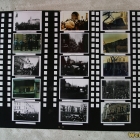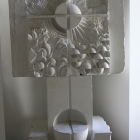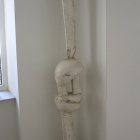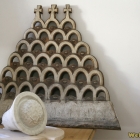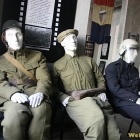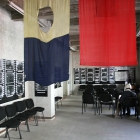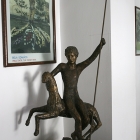Revolution Memorial in Timisoara, a humble remember of the anticommunist martyrdom
In December 1989, Timisoara declared itself the first free city of Romania, after a week of resistance to communist repression. It was the point of no return of the popular movement that soon spread around the country, overthrowing the 25 years dictatorship of Nicolae Ceausescu, together with a communist system that lasted 45 years.
Romanian freedom was payed with a very high price. Only during the Revolution over a thousand innocents died, adding to those over two hundred thousand murdered in communist prisons of the totalitarian system. Two decades later, like most of the one hundred million victims of communist experiments worldwide, these are still unknown heroes. Their story is yet a taboo subject in the West, where communism is still viewed just as a failed idealist system, whose genocide is excusable by the ‘noble’ egalitarian purpose.
Meanwhile, in the former communist countries of the East a Restoration takes place. A phenomenon similar to that which followed the French Revolution. The positions of power in business, politics and media are strongly in the hands of former communists and especially of those from the feared secret service of that era. A twist of history turned communists into wealthy capitalists and state clients. Under the stress of everyday life, the general public is kept away from the great lessons of history which might trigger a ‘dangerous’ leap of conscience. This is just a short explanation for the fact that the most important event in recent Romanian history is only remembered in almost clandestine forms. Such is the case of the Revolution Memorial in Timisoara, where visitors can watch documentaries about the event, see objects that belonged to those involved and models of the monuments built in the city to commemorate those December days.
The organizers of this memorial, former participants in the Revolution, some even wounded, chose to present the Revolution in its profound nature – not only a political movement, but also a spiritual one. In order to understand this usually ignored aspect, we must remember that communism was a militant atheistic system. During the century when it was experience, churches were destroyed, priests and believers making the majority of those killed and imprisoned. In Romania, priests were even subject to the ferocious Pitesti experiment, an unprecedented attempt to brainwash prisoners through torture, in order to make them abandon their most intimate beliefs and embrace the communist world-view.
The Revolution outburst in Timisoara in December 1989 precisely from a Protestant priest who was facing deportation for his courageous sermons. One of the first slogans shout by the Romanian protesters those days was “God exists!”, in front of the army sent by Ceausescu. This outburst of faith came after almost half of century of religious repression of a people that is deeply Christian.
That is why the memorial is focused on the spiritual significance of this Christian revolution. At ground level, a chapel with Byzantine frescoes resembles the atmosphere in ancient catacombs where Christianity started its fight against Rome. In the other rooms of the memorial there are models of the 15 small monuments found in Timisoara and drawings made by today’s children who give their imaginative version of the event. Most of the monuments are also focused on the idea of Christian sacrifice, rather than on that of triumph, a mystical understanding closer to the Christian Orthodox view of Romanians.
- Home Page
start page - Architecture
landmark buildings - Sacred architecture
places of worship - Nature
landscape photography - Concert
performing artists - Christmas
Santa Claus pictures
- Jooble
jobs for photographers - Escape
an out of control blog - Merry Christmas
The best organizer of Christmas parties - Astro photo
Eclipse hunting and astrological photography





